Is your toilet leaking or running nonstop? This common household headache wastes water and can jack up your utility bills. Luckily, you can fix most toilet problems yourself with a little know-how and some basic tools. Let’s walk through some simple toilet parts, common issues, and step-by-step solutions to get your toilet working properly again.
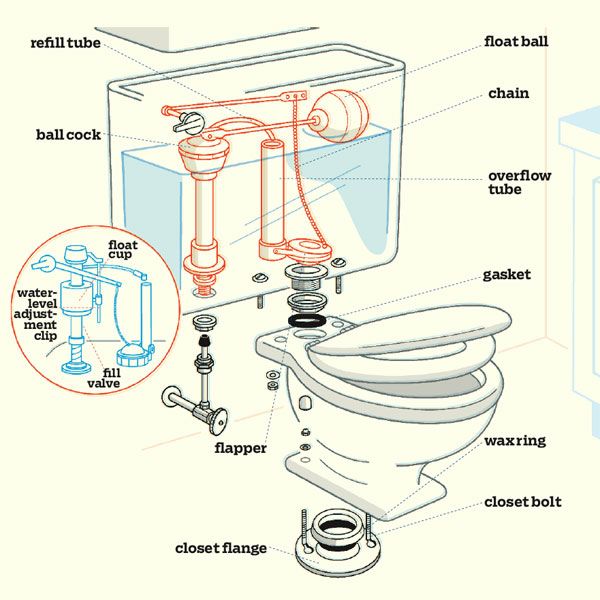
Know Your Toilet Parts
Understanding these parts will make troubleshooting easier.
Refill Tube
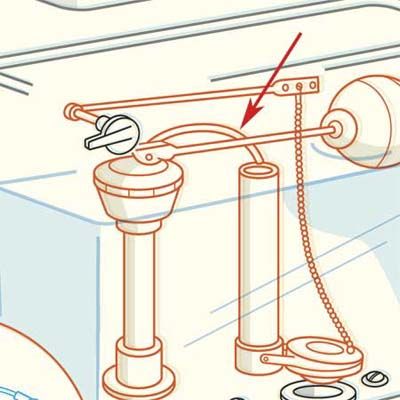
As the name implies, the refill tube replaces water in the bowl after each flush. If your toilet runs intermittently, check that the tube’s end is above the water level in the tank. If it’s dipped below, it’ll keep filling the bowl non-stop.
Ballcock (Fill Valve)
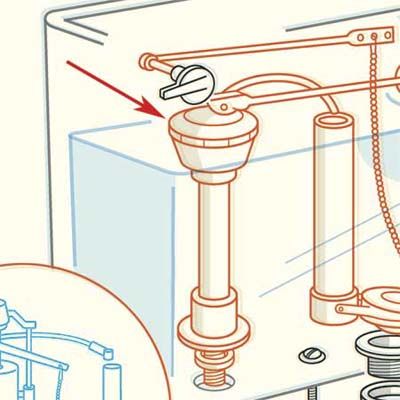
The ballcock is an on/off valve controlled by a float ball. It controls when water flows into the tank and bowl after flushing. If your toilet runs intermittently, a faulty ballcock could be the culprit. If adjusting it doesn’t help, you might need to replace it. Regular maintenance of the ballcock can prevent many common toilet issues.
Float Cup
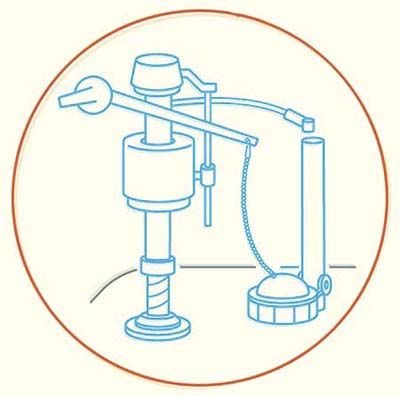
Many modern toilets use a float cup instead of a ballcock. It’s an all-in-one plastic assembly that’s easy to install and adjust. You can find them at home improvement stores. They’re more reliable and less likely to wear out than traditional ballcocks.
Float Ball
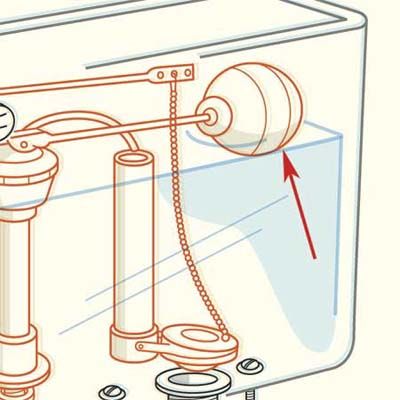
The float ball works with the ballcock to shut off the water filling the tank when it reaches a certain level. A properly functioning float ball prevents overflow and maintains the right water level in the tank. If your toilet runs constantly or doesn’t fill properly, try adjusting the float ball. A quick tweak here can save you from a sky-high water bill.
Chain
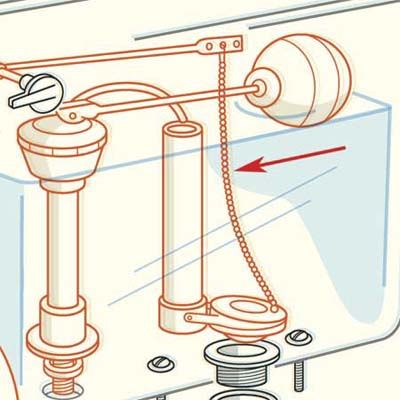
The chain lifts the flapper at the beginning of each flush. If your toilet runs constantly, check that the chain isn’t too short or long. A chain that’s too short will stop the flapper from sealing, while one that’s too long may get caught under the flapper and cause leaks. Either way, you’ll end up with a running toilet.
Overflow Tube
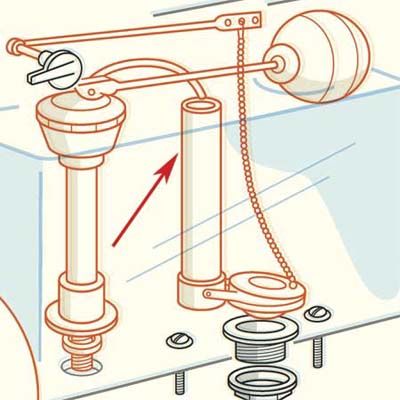
The overflow tube safeguards the tank against overflowing. If tank water is constantly draining into the tube, you may need to bend the arm of the float ball down slightly or lower the float cup on the replacement fill valve assembly. This keeps the water level below the tube’s top, preventing water waste.
Flapper
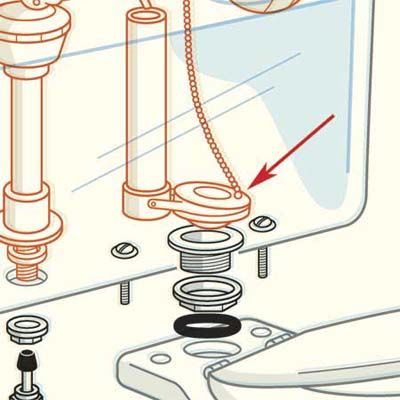
The flapper lifts to release water for flushing, then seals the tank again. If your toilet runs, check for mineral buildup on the flapper or its seat. A good scrub often fixes the problem. If not, replacing the flapper is a quick, cheap fix that can work wonders.
Gasket
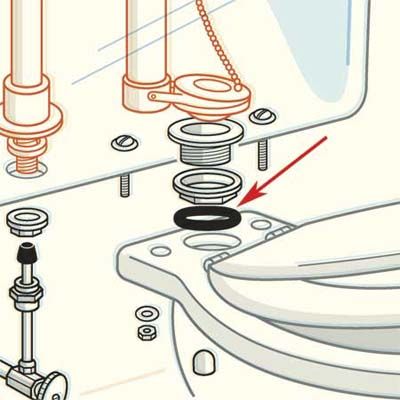
This rubber seal keeps water from leaking between your tank and bowl. A faulty gasket can lead to leaks between these two main components of your toilet. If you spot water seeping from the tank’s base, you might need a new gasket to prevent further damage and water waste. We recommend regularly inspecting the gasket to avoid big leaks in the future.
Wax Ring
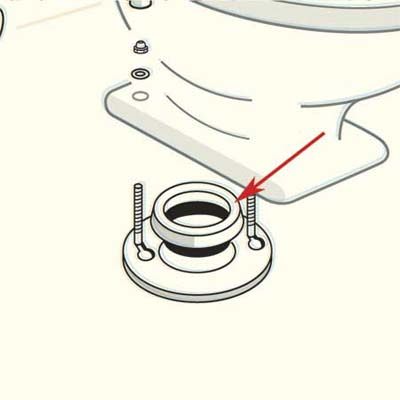
The wax ring seals the connection between the bottom of the toilet and the drain. If water leaks out from the base of the bowl, replacing the wax ring is usually the solution. This job requires removing the toilet, so we recommend hiring a plumber if you’re not familiar with this kind of repair. Replacing the wax ring before it fails can prevent damage to the floor around your toilet.
Closet Bolt
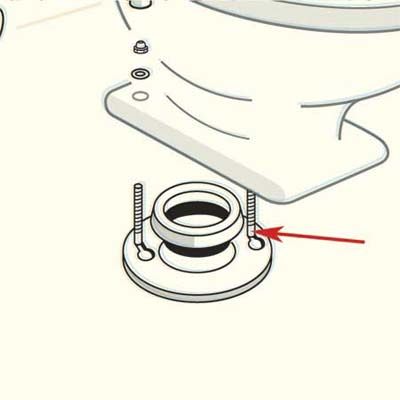
Closet bolts hold the bowl to the flange. If your toilet rocks, tightening the nuts attached to these bolts can stabilize it. But don’t overtighten—this can crack the bowl. Secure the nuts no more than a quarter-turn past finger-tight to avoid damage.
Closet Flange
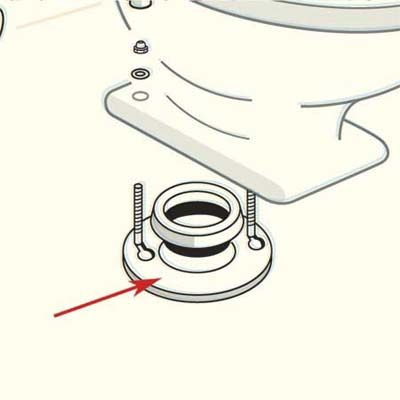
The closet flange anchors the toilet to the floor and connects to the drain pipe. A damaged or improperly installed flange can lead to leaks and an unstable toilet. If you suspect issues with the closet flange, it’s best to call a professional plumber.
Common Toilet Problems and Solutions
Now that you know the parts, let’s tackle some common problems:
- Constantly running toilet: That hissing sound coming from the tank is likely from a faulty flapper or a chain issue. Check and adjust the chain or replace the flapper if necessary.
- Toilet fills slowly: Slower-than-usual filling of the bowl is typically due to a partially closed supply valve or a clogged fill valve. See if opening the supply valve fully or cleaning water deposits off of the fill valve fixes the issue.
- Toilet won’t flush: You might need to reconnect the chain or replace the flush lever mechanism.
- Weak flush: A weak flush may be thanks to clogged rim jets or a partially clogged trapway. Clean the rim jets and use a plunger or auger to clear any blockages. A strong flush ensures thorough waste removal and prevents clogging.
When To Call a Professional To Fix a Toilet
While you can resolve many toilet issues with DIY methods, some problems require professional attention. It’s time to dial a plumber if any of the following apply:
- You notice extensive water damage around the toilet, which can signal a severe issue that DIY methods cannot resolve.
- The toilet is leaking from multiple spots. Multiple leaks suggest a more complex issue.
- You’ve tried fixing it yourself, but the problem keeps coming back. Professional plumbers have the expertise and equipment to fix stubborn issues.
- There are signs of sewage backup or strong odors. Sewage issues are severe and need immediate professional intervention to avoid health hazards.
- You’re uncomfortable making the repairs yourself. If you feel unsure about any part of the repair process, it is always better to consult a professional.
